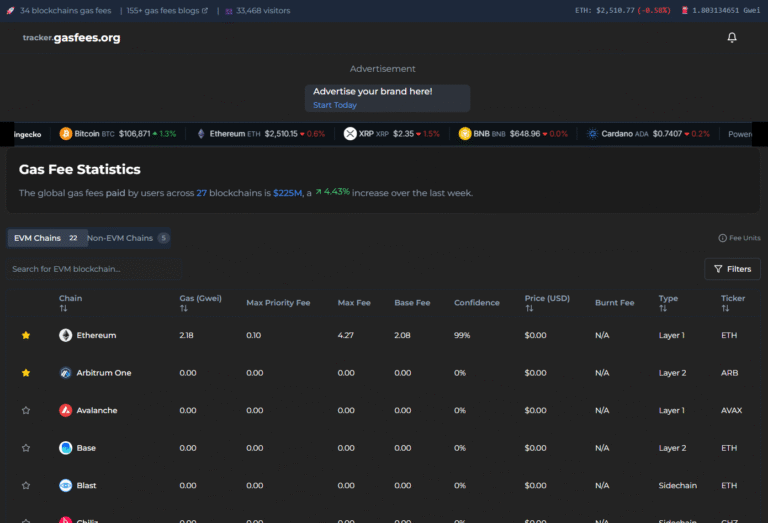
What Are Optimism Gas Fees?
Introduction
In the ever-evolving realm of blockchain and cryptocurrencies, challenges like scalability and transaction costs persist. Ethereum, the second-largest blockchain globally, has grappled with congestion and soaring gas fees during peak times. However, a glimmer of hope has emerged in the form of Optimism, a Layer 2 scaling solution that promises to bring efficiency and cost-effectiveness to the blockchain ecosystem. This article takes an extensive look at Optimism gas fees, delving into their definition, functionality, and potential impact.
Understanding the Challenge
Before we explore Optimism gas fees in-depth, let’s first understand the pressing issue they aim to resolve. Ethereum’s immense popularity, coupled with its limited throughput capacity, has led to severe congestion. Consequently, gas fees have surged to exorbitant levels, and transaction speeds have slowed down considerably. To enhance scalability, reduce gas fees, and improve the overall user experience, innovative solutions are urgently needed.
Introducing Optimism
Developed by Optimistic Ethereum, Optimism employs a technique called Optimistic Rollups to address Ethereum’s challenges. Now, let’s delve into the intricate world of Optimism gas fees and how they contribute to the ecosystem.
Deciphering Optimism Gas Fees
Optimism gas fees are transaction costs on the Optimistic Ethereum network. Users incur these fees when interacting with decentralized applications (DApps) on the Optimism Layer 2 chain. These fees aim to be substantially lower than Ethereum’s mainnet gas fees, providing a cost-effective blockchain experience.
Optimism achieves this by grouping multiple transactions into a single “rollup” submitted as one transaction on Ethereum’s mainnet. This bundling enhances efficiency and reduces the demand on Ethereum’s computational resources.
Transitioning to Layer 2
To take advantage of Optimism gas fees, users must initially bridge their Ethereum assets to the Optimism Layer 2 chain. This process involves locking up their assets on Ethereum’s mainnet and, in return, receiving corresponding Layer 2 tokens on the Optimistic Ethereum network. Once this transition is successfully completed, users can enjoy the benefits of reduced gas fees and faster transaction confirmations while interacting with DApps operating on Optimism.
While the transition to Layer 2 may require some initial setup, it promises long-term benefits in terms of cost savings and improved usability. This strategic shift aligns with a broader trend in the blockchain space, wherein users are increasingly seeking alternative networks that offer scalability without compromising security.
Trimming Transaction Costs
Optimism gas fees shine due to their affordability. Compared to Ethereum’s mainnet fees during high demand, Optimism provides relief. Offloading transactions to Layer 2 alleviates Ethereum congestion, resulting in lower gas fees for all users.
Transitioning to Layer 2 not only benefits users but also enhances the appeal of DApps. Reduced gas fees make DApps more accessible, enticing developers to build on the platform and attracting users previously deterred by high costs.
Elevating User Experience
Optimism gas fees also improve the user experience. Ethereum’s mainnet’s slow confirmation times and unpredictable fees have frustrated users and hindered blockchain growth. Optimism’s Layer 2 solution addresses these issues with near-instant confirmations and transparent, predictable gas fees.
Users can interact seamlessly with DApps, confident in quick transactions and stable costs. This enhanced experience fuels blockchain and DApp adoption.
Environmental Impact
Environmental concerns have emerged in the crypto community. Ethereum’s energy consumption, as a Proof-of-Work blockchain, raises carbon emission worries.
Optimism operates on Ethereum’s foundation, inheriting its security while reducing environmental impact. By aggregating transactions and minimizing computational resources, Optimism promotes a sustainable blockchain ecosystem.
In Conclusion
Optimism gas fees offer promise in addressing Ethereum’s scalability and cost challenges. Through Layer 2 scaling, Optimism provides lower gas fees, faster confirmations, and an improved blockchain experience. This innovation benefits users and promotes decentralized application growth.
As the crypto space evolves, embracing efficient, cost-effective, and sustainable technologies like Optimism is vital. Transitioning to Layer 2, including Optimism gas fees, is a significant stride toward a scalable, user-friendly, and eco-conscious blockchain ecosystem.




